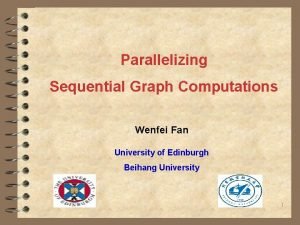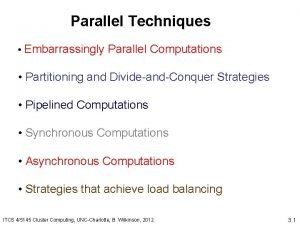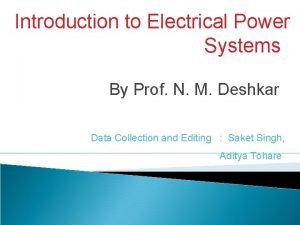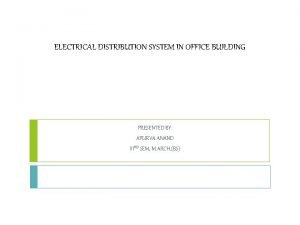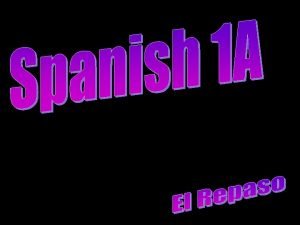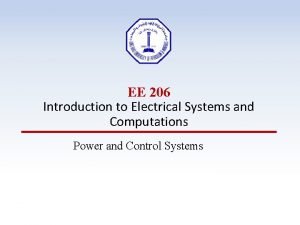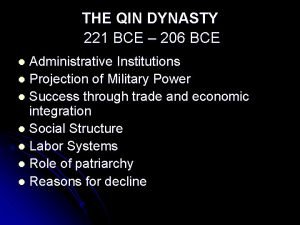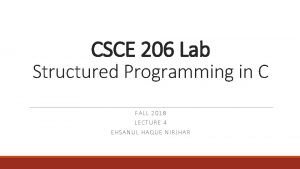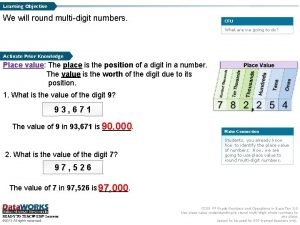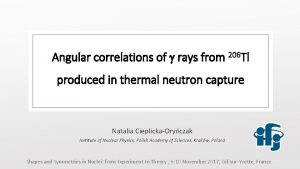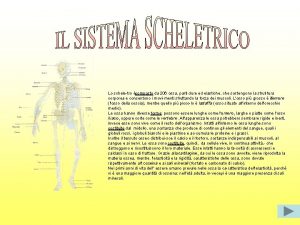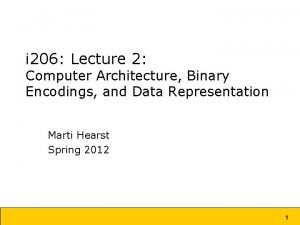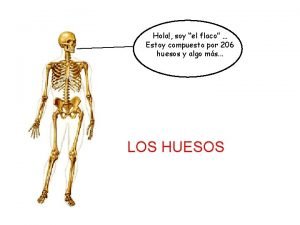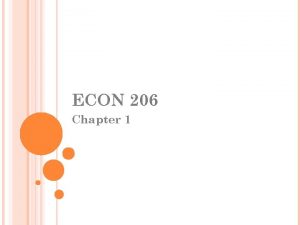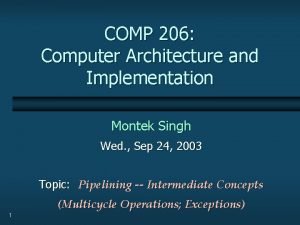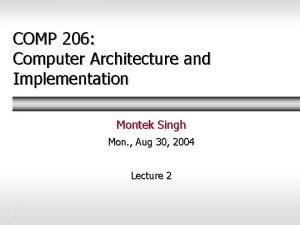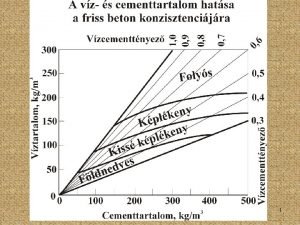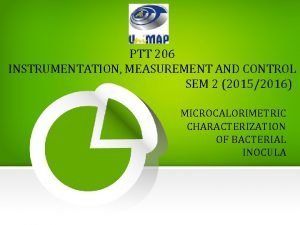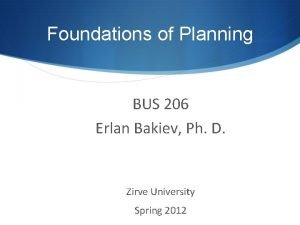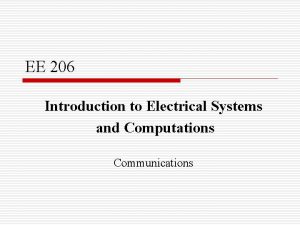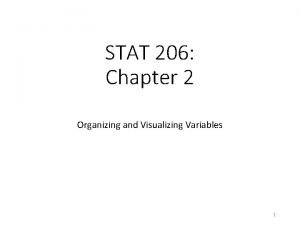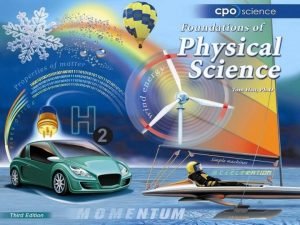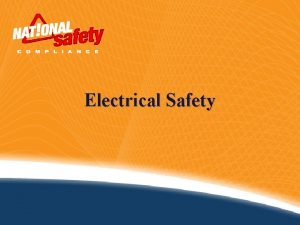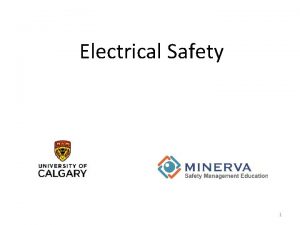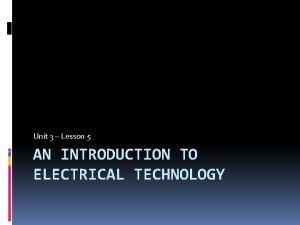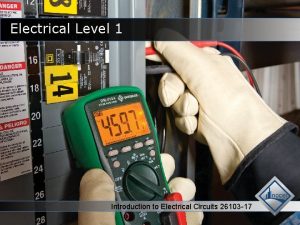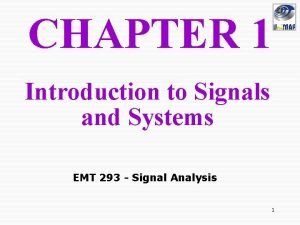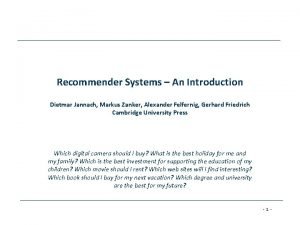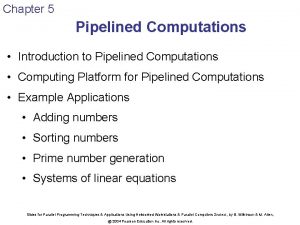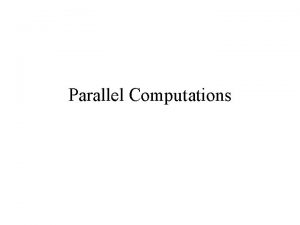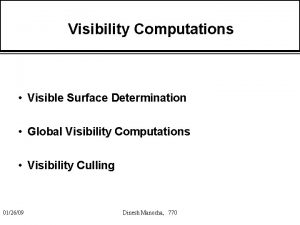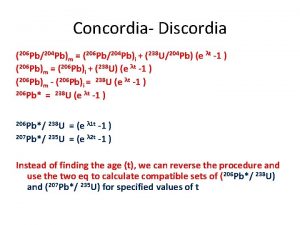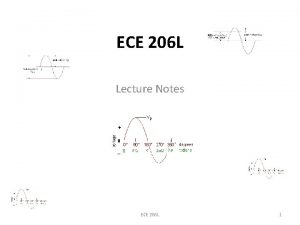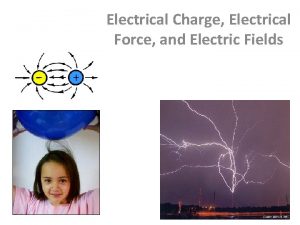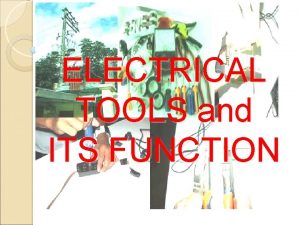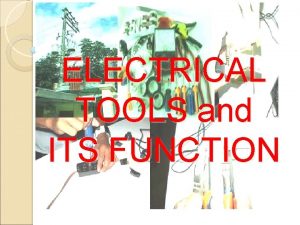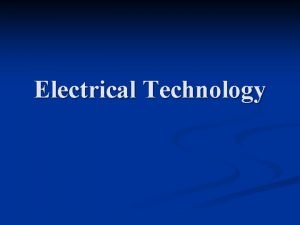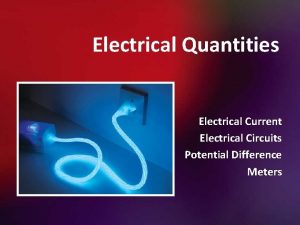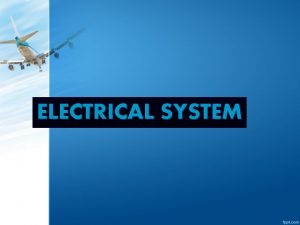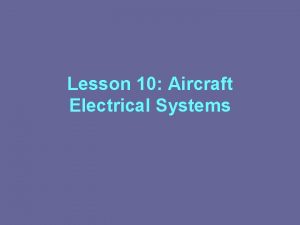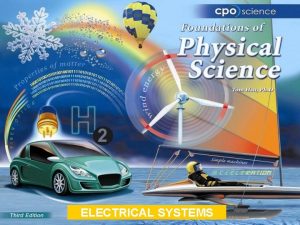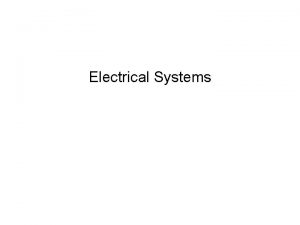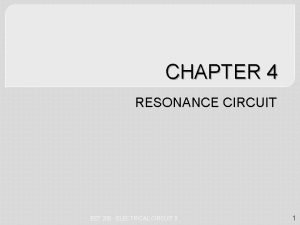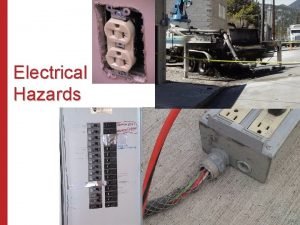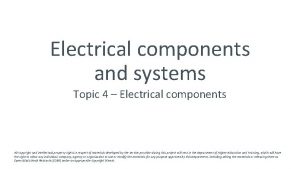EE 206 Introduction to Electrical Systems and Computations














































- Slides: 46

EE 206 Introduction to Electrical Systems and Computations Power and Control Systems

EE 206 Introduction

EE 206

EE 206 Power: Instantaneous consumption of energy Power Unit: Watt (W) • Installed Saudi generation capacity is about 56 GW • Maximum load of the Eastern Province of Saudi Arabia is about 12. 5 GW

EE 206 Power Grid Power grid: can range from quite small, such as an island, to one covering half the continent – there are several major “interconnected” ac power systems in Saudi Arabia, each operating at 60 Hz ac. Many other countries, such as all other GCC countries, operate at 50 Hz.

EE 206 Power Grid Saudi Power Grid

EE 206 Energy: Integration of power over time; energy is what people really want from a power system Saudi annual electric energy consumption is about 212 billion k. Wh (about 7, 862 k. Wh person, which means on average we each use 0. 79 k. W of power continuously)

EE 206 Generation System

EE 206 Generation • It is the process of converting different forms of energy into electric energy • The vast majority of generators are electro-mechanical generators: – Synchronous Machines – Induction Machines • Most generators in the power system are synchronous generators. • They come in a variety of shapes and sizes. • Power rating ranges from a few megawatts (MW) to 1500 MW!

EE 206 The prime mover can be driven by falling water … A Hydro Power Plant.

EE 206 Steam Power Plant • The prime mover can be driven by steam produced by burning fossil fuels, such as natural gas, … A Steam Power Plant. 11

EE 206 Therefore, several other non-fossil-fuel technologies are used to generate electricity, such as…

EE 206 Nuclear Power Plant • The prime mover can be driven by steam produced utilizing nuclear technology, … A Nuclear Power Plant.

EE 206 And… RENEWABLES!

EE 206 Solar-Thermal Power Plant • The prime mover can be driven by steam produced utilizing energy from the sun, … A Solar-Thermal Power Plant. 15

EE 206 Wind “Farm!” • The prime mover can be driven by wind, … A Wind Energy Plant. 16

EE 206 Wave Energy • The prime mover can be driven by sea waves at the shores, … A Wave Plant. 17

EE 206 Well, Can Electric Energy Be Produced without Electro-Mechanical Machines? • The answer is … YES! • Consider solar photovoltaic (PV) energy… 18

EE 206 But, Does Solar PV Produce AC Power? • No, it does not. Solar PV produces DC power. • Therefore, in order to integrate it to the AC power system, DC/AC converters are needed. “Power electronics” can do that for us! 19

EE 206 Transformers

Transformers • What is a transformer? A device for increasing or decreasing an AC voltage • A transformer used to increase the voltage is called a "step up" transformer, while that used to decrease the voltage is called a "step down" transformer. • A transformer consists of two coils of wires known as primary and secondary windings

Transmission Transformer El-Sharkawi@University of Washington 22

Service Transformer El-Sharkawi@University of Washington 23

EE 206 Transmission

EE 206 Transmission System • This is the electric infrastructure that transmits the electric power from the generating units to the distribution systems. • Voltage levels range from 115 k. V to 1 MV. • The highest we have got here in SA is 380 k. V. • Job: Serves as a “power pool”. – Most generators “dump” their power into the pool. – Most loads “suck” their power from the pool. • It is network-like. – Therefore, it is hard to tell the direction of power in each wire by inspection. – A “power flow” problem has to be solved numerically to determine amount and direction of power in each wire.

EE 206 Transmission System Transformer Transmission line Bus (Interconnection node) Generator Substation

EE 206 Transmission System Components • A bus: A node at which two or more components are connected. • A transformer: A device that transforms voltage levels from low to high or vise versa. • A transmission line: A conductor that carries power over long distances from one bus to another. • A substation: A group of buses, transformers, and other equipment housed in one location.

Transmission Lines 28

Transmission Lines • Transmission lines carry power from generating plants to the distribution systems that feed electricity to domestic, commercial and industrial users. • Electricity is normally generated away from load centers. This is because of environmental and safety reasons. Hydro resources may be at remote location • Transmission lines can be overhead or underground cables. • Electricity is usually sent over long distance through overhead power transmission lines. • Underground power transmission is used only in densely populated areas (such as large cities) because of the high costs and losses.

EE 206 Distribution

EE 206 Distribution System • Voltage levels below 69 k. V. • It is radial. – That is, power flow is “uni-directional”; from the source (or the transmission system) to the loads. • Distribution lines can be – Overhead, such as in less populated areas. – Underground, especially in populated areas, like cities.

EE 206 Electric Loads • An electric load (or demand) is any component that consumes electric power. • Examples: Motors, air conditioners, heaters, washers, dryers, light bulbs, etc. • Loads can be categorized as residential, commercial, and industrial.

EE 206 Billing • At our houses, we consume both real and reactive powers. • Therefore, the utility company (SEC in our case) has to generate both. • However, we only pay for real power! • On average, we pay at a rate of 10 halala/k. Wh.

EE 206 Billing • Example: A 200 -Watt light bulb is left on continuously for one month (30 days). How much does that cost? • Every hour, this bulb consumes 200 Wh = 0. 2 k. Wh. • One month is 30*24 = 720 hours. • That is, the real power consumption of the bulb in one month is (0. 2 k. Wh/h)*720 h = 144 k. Wh. • This costs 144 k. Wh*10 halala/k. Wh = 1440 halalas. • That is, the monthly energy cost is SR 14. 4.

EE 206 Control Systems

Control System • A control system is a device, or set of devices, that manages, commands, directs or regulates the behavior of other device(s) or system(s).

Examples of Control Systems Water Mixers and Temperature Regulators

Keeping Car on Track

Main Components • • • Sensor Controller Actuator Plant: System we are trying to control The overall process needs to be automated.

Sensors • A device which detects or measures a physical property and records, indicates, or otherwise responds to it. • They act as transducers: convert the measured physical variable variation to voltage variation.

Sensors at Home

Instrumentation in Cars

Controller • A controller is a device, in the form of a microprocessor or computer, which yields a certain action/decision based on a given input. • The controller is the brain of the control system

Actuator • A device that “moves” something • Usually a motor • Generally speaking: an electrical, hydraulic, or pneumatic device (such as a relay), that controls the flow of power.

Open Loop Systems

Main Topics in Control System • • • Linear & Non-Linear Systems Deterministic & Stochastic Systems Stability Cotrollability Observability System Identification
 Incrementalizing graph algorithms
Incrementalizing graph algorithms Embarrassingly parallel computations
Embarrassingly parallel computations Introduction to electrical power systems
Introduction to electrical power systems Prop 206 pto
Prop 206 pto Electrical supply system in building
Electrical supply system in building Verbals ending in -ing and used only as nouns are _____.
Verbals ending in -ing and used only as nouns are _____. Ee-206
Ee-206 Comp 206
Comp 206 221 - 206
221 - 206 Csce 206
Csce 206 Round 787 206 to the nearest ten
Round 787 206 to the nearest ten 206 tl
206 tl Fct beton
Fct beton 206 ossa
206 ossa 206 to binary
206 to binary Caracteristicas de los huesos
Caracteristicas de los huesos Econ 206
Econ 206 Comp 206
Comp 206 Common case fast
Common case fast Cnom beton
Cnom beton En 206-1
En 206-1 206 ptt
206 ptt Psir 206
Psir 206 Psir 206
Psir 206 Plan bus 206
Plan bus 206 Ee 206
Ee 206 206-684-0268
206-684-0268 Stat 206
Stat 206 Comp 206
Comp 206 Complex impedances
Complex impedances One electrical systems
One electrical systems Electrical safety introduction
Electrical safety introduction Electrical safety introduction
Electrical safety introduction Lesson 5 introduction to electrical devices
Lesson 5 introduction to electrical devices Nccer introduction to electrical circuits
Nccer introduction to electrical circuits Decision support systems and intelligent systems
Decision support systems and intelligent systems System analysis and design
System analysis and design Pxdes expert system
Pxdes expert system Introduction to signals and systems
Introduction to signals and systems Advantages of digital computers
Advantages of digital computers Introduction to digital control
Introduction to digital control Principles of complex systems for systems engineering
Principles of complex systems for systems engineering Embedded systems vs cyber physical systems
Embedded systems vs cyber physical systems Engineering elegant systems: theory of systems engineering
Engineering elegant systems: theory of systems engineering Match the tool in making simple electrical gadgets
Match the tool in making simple electrical gadgets Introduction to recommender systems
Introduction to recommender systems Recommender systems an introduction
Recommender systems an introduction
